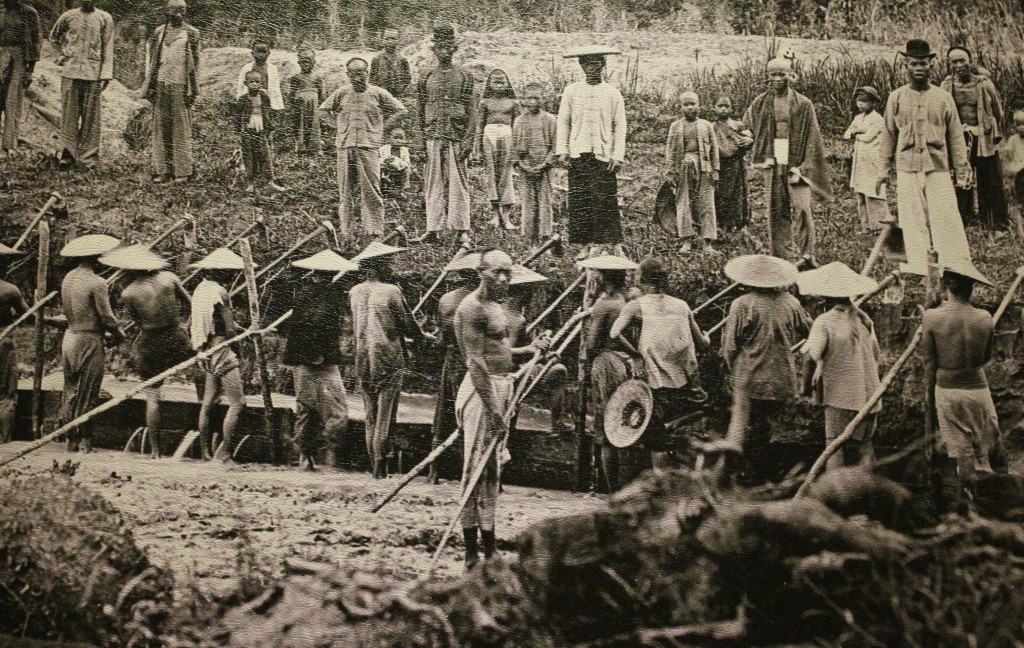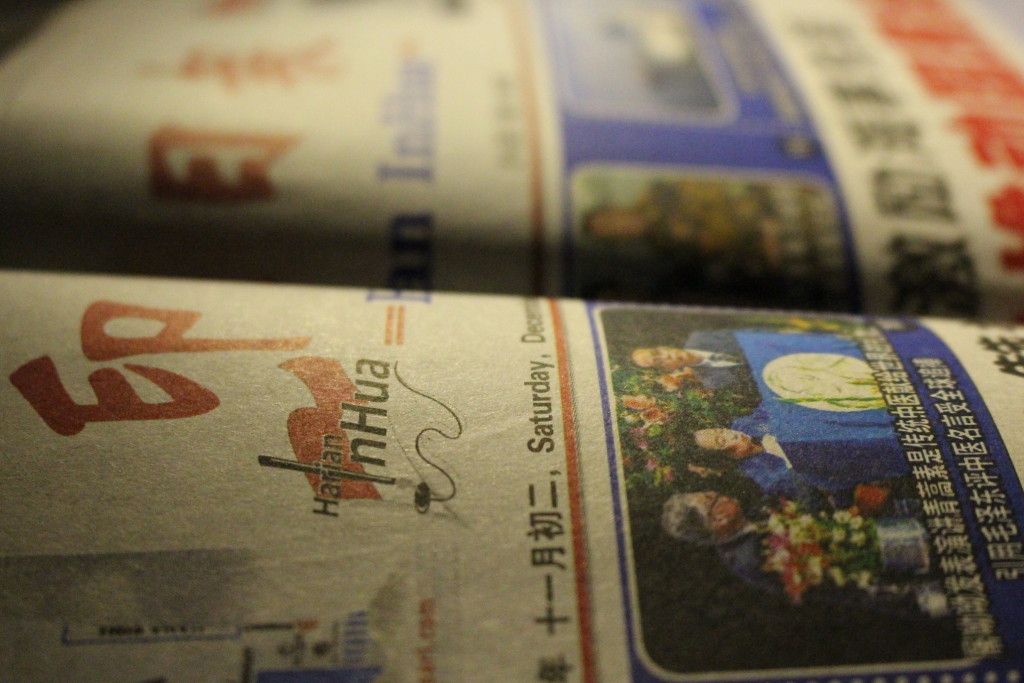Until Next Time
It had been nearly two months since I left Vienna and found myself in Surabaya, Indonesia. I had originally planned to go to Singkawang, but due to forest fires and resultant haze in West Kalimantan, I had been warned to avoid this area for a while. After a trip in Singapore (the blessing and curse of the 30-day visa-on-arrival), I had some time to reflect upon my time in Indonesia. I returned to Indonesia, though this time in Jakarta for about 3 weeks. Nearly that time of the month once again, I decided to take a trip to Kuala Lumpur.
There have indeed been a few personal realizations and developments in the past two (okay, few) months since I’ve written. For one, I’ve decided to stop worrying about producing observation-driven or research-like “content” on Hakka culture and have (finally) shifted my focus toward experiencing my year perhaps as the Watson Foundation had intended. That is, I’ve been more occupied with actually experiencing cultures instead of writing about them. Taking a hiatus from writing has forced me to stop distilling each day within a narrow lens—something that was repeatedly frustrating and limiting while living in Vienna.
Living in Indonesia has been a vastly different experience. I have not really had any exposure to Indonesian language or culture prior to this trip, so I suppose there was a lot of culture shock at first. The Hakka community, which has unsurprisingly taken on its own local influences, was also initially very foreign to me. Though two months of living in Surabaya and Jakarta don’t feel nearly long enough to understand Indonesia, I’ve gotten a lot closer to understanding the lives of Chinese in Indonesia, the Hakka community, and Hakka women’s roles in the community.
3.5 Pounds of Pork: Surprise Stories
If there’s anything I’ve discovered so far, it’s harder finding countries where I don’t have family than finding countries where I have I did not know this until my uncle visited from Hong Kong this summer. As it turned out, my grandma had been born to a Chinese-Indonesian family. Shortly after she was born, her mother died. With a single father and six children (all girls), her family wasn’t sure how a baby girl would fair in a land without a mother. Her father ended up giving her over to another family in the mainland. The trade-off? 3.5 pounds of pork.
As I’ve come to find, that has been a fairly common practice among families I’ve stumbled upon throughout Southeast Asia. While this might be initially written off as inhumane, it’s worth taking a longer look at adoption across cultures. Adoption was a common practice among Hakkas, based on what I’ve heard from the accounts and stories I’ve been collecting so far. And in times of persecution among Hakka who went overseas, it was through expanding kinship networks and arranging adoptions that families were able to ensure their children’s safety to the best of their abilities by sending them to a family that had better economic footing or living in a safer country. Though there was certainly a preference for males, Hakka have been noted for finding ways to circumvent female genocide or abandonment.
This is perhaps where arranged marriage becomes significant to Hakka culture in diaspora. Families that could not afford to keep their daughters would rather arrange for her to live with a relative or prematurely arrange her marriage to another family. Hakka girls thus became “little daughter-in-laws” or tong-yam-sip. In these arrangements, it was considered fair for all parties. In ideal situations, the girl’s in-laws would have a role in raising someone who would play an important role in the family.
There are inevitably adoption stories that went horribly wrong. Given what contemporary families have recounted, most adoptees seemed well integrated into their adoptive families. Of course, there was a difference in how adopted children and biological children were treated when resources were scarce. My grandmother explained that she was treated well in her household. She was attending school until she was about twelve years old. When her adoptive mother passed away though, she knew she needed to quit school to take care of her younger brothers, as this was an expectation driven by her status as an adopted child and as a girl.
My grandmother grew up in a weilongwu in rural Meixian. When I visited in 2013, I remember finding the lamps in their home so peculiar. The designs were not at all traditionally Chinese, and they were ornately decorated with curlicues and dramatic whorls. No other house in the area had these lamps. When I found these same antique lamps in Surabaya, it really hit me that I was in a country that was at some point, a part of my family’s story as well.
Tionghua
To give a little context about Surabaya: It’s the second largest city, next to Jakarta, on the island of Java. While Lonely Planet warns tourists that they’ll be sorely disappointed in the business-driven city, Surabaya was a fairly ideal place to settle down for my project. Home to one of the largest Chinatowns in Indonesia, Surabaya has a tremendous ethnic Chinese population. Indonesians of Chinese descent prefer to be referred to as ‘tionghua,’ and with good reason. The Chinese community here began in the 15th century when Zheng He first arrived in West Kalimantan for new trade opportunities. Since then, there have been three major waves of migration who migrated either for business or to escape from the mainland. The first group arrived shortly after Zheng He’s voyage, the second group came during China’s Opium War, and the third group came in the mid-1900s.
Though tionghua have been in Indonesia for over 600 years, there is a huge divide between local or indigenous Indonesians and Indonesians of Chinese descent. A lot of these tensions are linked to the hierarchy established during Dutch colonial rule, which lasted from the 1500s to the 1800s. Chinese laborers received preferential treatment from the Dutch, and they were more readily privileged Dutch education and participation in western institutions.
Dutch were conscientious of the differences among Chinese society in Indonesia. Many were aware of the Hakka as a distinct group. In the colonial eye, Hakkas were ideal laborers because they were hard workers. Perhaps recognizing these ethnic rivalries, the Dutch used this to their advantage. Hakkas who were not satisfied working with Hokkiens took on jobs working for the Dutch, especially among tin mining islands such as Bangka-Belitung.
Their work ethic was a conditional observation though, as most Hakka initially arrived after the Hokkien, and initially as laborers instead of business owners. To this day, there is still a noticeable divide between Hokkiens and Hakkas. Today’s Hakka people often cite one major difference that separates them from Hokkien. Where Hokkien are known for their willingness to adapt and adept business skills, Hakka are most known for their determination to hold onto their culture and language—which has made them outwardly appear exclusive according to other Chinese groups and native Indonesians.
Love in the time of Suharto
“At first, my husband’s mother did not like me. She said, ‘Don’t marry a Hakka girl. They eat so much meat!” ‘But what is that supposed to mean to them?’ “I don’t know! But I don’t think it’s true anyway.”
Something that struck me as odd in Vienna was the low numbers in inter-ethnic marriage. I had seen a significant amount of interracial marriages that had worked out between Hakka Indians and other Austrian nationals. But I had probably only seen a handful of Hakka people who had married with other Chinese dialect or ethnic groups.
When I first came to Surabaya and Jakarta, I was struck by the prevalence of inter-ethnic marriages. As I came to find out though, families were once a lot stricter about whom their children could and could not marry. In the past, Hakkas were expected to marry other Hakkas. That’s not the case nowadays, and Hokkien-Hakka marriages are perhaps more common to find than Hakka-Hakka ones.
I’ve asked myself and others why this happened. The most common conjecture has been in reference to Suharto’s regime from 1965 to 1997. Within this 32-year period, Chinese schools and printed materials were banned, and the erasure of language subsequently meant a weakened sense of dialect group identities. Celebrating or attending religious institutions was prohibited, perhaps prompting so many to convert to Christianity. Some families managed to keep up their Chinese dialects in the household, but most families took precautions.

“Parents would slap their own children if they heard them speaking Chinese,” one woman explained to me. “So that’s why they can’t speak Chinese nowadays.”
The years following 1965 were perhaps what brought the tionghua community together. No one has given a clear answer as to how Hakkas and Hokkiens began to inter-marry, but some have ventured to guess that differences mattered less when Suharto loomed large. In the next 32 years, dialects and regional customs eroded in the household. Many young people today may be able to claim Hakka or Hokkien heritage, but they often don’t know what the differences are between the two cultures—a condition that brings other Chinese from the mainland and around the world to scratch their heads in confusion, or in even less empathetic circles, frown with disdain.
Taking back identity…but which one?
Today’s generation of tionghua seem to be under pressure to reclaim those lost 32 years. Wealthy families often opt to send their children to the mainland or Taiwan for their higher education. It has become obligatory for tionghua, grandparents and teens alike, to throw in a few Chinese pop songs among their Linkin Park, Bon Jovi and P!nk. Teens are fast to pick up on the latest fashion and beauty trends, ranging from skin lightening products to false double eyelids.
Adapting these cultural trends can be observed in many overseas Chinese communities, I’m sure. But I see Indonesia’s Chinese community going extra lengths to maintain Chinese-ness in a time and place where the rest of the world questions their legitimacy as overseas Chinese. Most noticeably (or at least to me), it seems that tionghua rarely attend public schools, even for higher education, and in spite of the better funding that such institutions may receive.
For about six weeks, I lived near a local university and would hang out as an English language partner. It didn’t take long for me to notice that the majority of the staff and faculty were overwhelmingly of Chinese descent. When asked why they opted for private religiously affiliated institutions, many explained that they feared facing ethnic discrimination at public institutions.
“So let’s say there was a war between China and India. Which side would you choose?” I asked, ‘Why do I have to choose?’
I often found myself questioning the extent to which this discrimination continued to persist. Immersing myself in the university community, I quickly noticed that an overwhelming majority of the faculty and staff were of tionghua descent. I later came to find that tionghua often opt for private institutions as opposed to state institutions, maintaining a community in which they feel comfortable and safe. And it became a running joke that many young people end up finding their partners this way.
It was amazing how long I could go without having to talk to native Indonesians. I could choose to live in separate areas, shop in separate grocery stores, and eat in separate restaurants if I really, really wanted to. I thought about how my college classmates questioned why students of marginalized backgrounds chose to “self-segregate.” In the US, self-segregation usually meant a trade-off between social security and social status. I could feel more comfortable hanging out with friends who looked like me and lived like me, but it was at the expense of being seen as insular and resentful of mainstream America. But in this case, it was often wealthy ethnic Chinese who were setting the standards for how to enjoy the finer things in life.
On the other hand, there were plenty of tionghua who were acutely aware and conscious of ways in which some tionghua wielded their economic power in privilege. It is common for middle-class families to hire maids, meaning a common power dynamic between ethnic Chinese employers and native laborers. While tionghua may see themselves as assimilated and loyal members of Indonesian culture, there are nonetheless those who maintain a class hierarchy.
I also caught myself relating to the struggle of finding a middle ground when trying to prove belongingness to both the Chinese and local contexts. My attempts at understanding nationalism and ethnic belongingness in Indonesia often brought me to reflect on what it must have been like to be Chinese in India for my parents’ generation. My father’s generation had difficulty convincing others that both Indian and Chinese cultures could reside in one person. While traveling, I’ve been asked time and again about “where I’m from.” The United States was never a satisfactory response, and it was equally unsatisfactory whenever I told them that my parents are from India and Pakistan. Time and again, people have cocked their heads, looked at me thoughtfully and said, “I don’t see it.”
And yet, there were many times when I found myself lacking empathy and instead passing judgment on tionghua cultural authenticity as well. Many students were not sure of where their families had originated or to which dialect group they belonged. Almost everyone I met either at or outside of the university had adapted Indonesian names. In most cases, the students I encountered were the first generation to begin learning Mandarin, and almost no one spoke their actual family dialect. Quite a few students had been born into families that had converted to Christianity generations ago. Foods like 包子 (baozi) or 拉面 (lamien) became “pau” and “mie” and, as far as anyone else knew, originated in Indonesia.
I struggled to find the Chinese-Indonesian consciousness among the tionghua community. Perhaps the struggle stemmed from my own inability to pick apart what was uniquely part of “Chinese” identity. After all, I had grown up in a hybrid culture as well. And of course, I found myself asking, my next question was this: How do we define Hakka-ness in the Indonesian context?

